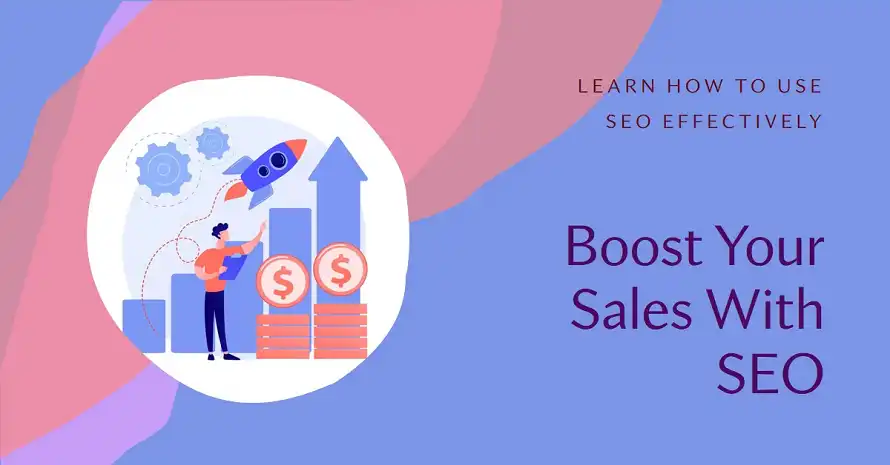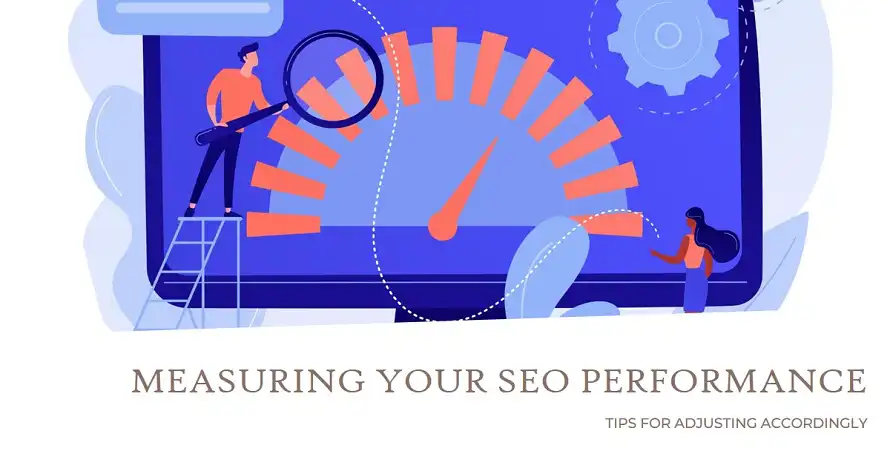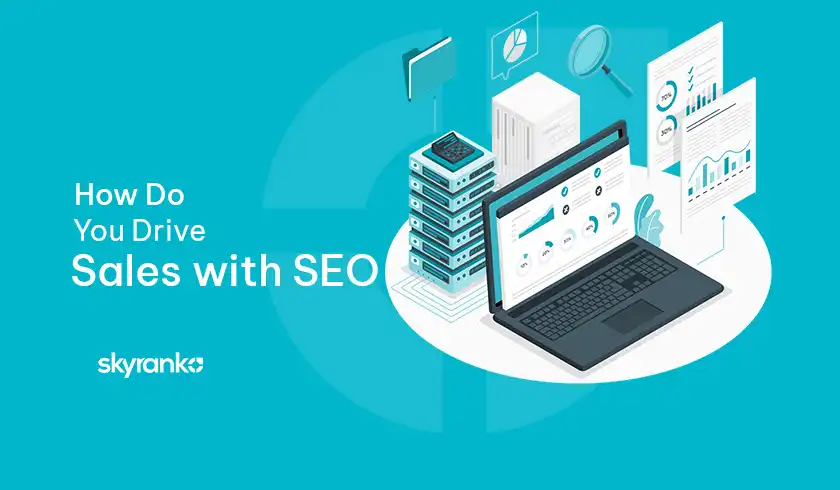Are your website visitors just window shopping? Do they browse your products or services but never make a purchase? If so, you’re not alone. Converting website traffic into sales is a common challenge for businesses. That’s where search engine optimization (SEO) can be a game-changer.
SEO is the practice of optimizing your website and online presence to rank higher in search engine results for relevant keywords. By improving your visibility in search engines like Google, you can attract more qualified leads to your website – people who are actively searching for products or services like yours. And when you’re at the forefront of their search, you’re more likely to convert those leads into paying customers.
What Can SEO Do For Your Sales
SEO vs Paid Ads: Short-Term vs Long-Term Gains
While paid advertising can deliver quick bursts of traffic, SEO is a long-term investment that pays dividends over time. With paid ads, you’ll see an immediate influx of visitors, but the moment you stop paying, the traffic disappears. SEO, on the other hand, builds momentum and drives organic (free) traffic that compounds as you consistently optimize your website and content.
Organic Traffic vs Cold Calls: Attracting Qualified Leads
Traditional sales tactics like cold calling often involve interrupting prospects who may not even be interested in your offering. SEO, however, attracts users who are already actively searching for your products or services. These are qualified leads who are more likely to convert into customers, as they’ve demonstrated an intent to purchase.
User Journey & SEO: Positioning Your Business for Every Stage
SEO isn’t just about driving traffic; it’s about positioning your business at every stage of the buyer’s journey. From initial awareness to active evaluation and final purchase decision, optimized content can guide users through the sales funnel, addressing their questions and concerns along the way.
Admittedly, it can be challenging to directly attribute sales to SEO efforts. However, SEO content is essential for attracting qualified leads who are more likely to convert, making the investment well worth it.
How to Use SEO to Drive Sales

Keyword Research: The Foundation
Effective keyword research is the cornerstone of any successful SEO strategy. It involves identifying the terms and phrases your target audience uses when searching for products or services like yours.
Understanding different types of keywords is crucial. Informational keywords (e.g., “What is SEO?”) indicate early-stage awareness, while commercial keywords (e.g., “best SEO tools”) suggest active evaluation and purchase intent. Prioritizing high-intent, commercial keywords will help you attract leads closer to the conversion stage.
Tools like Google Keyword Planner, SEMrush, and Ahrefs can help you uncover relevant keywords and their search volumes. Additionally, analyze your competitors’ content and backlink profiles to identify opportunities and gaps in your strategy.
On-Page Optimization: Attracting and Converting Visitors
With your target keywords identified, it’s time to optimize your website and content to rank higher in search engines and convert those visitors into customers.
Content is King: High-quality, informative content that addresses your target keywords is essential. Blog posts, product descriptions, and FAQs are all opportunities to demonstrate your expertise and provide value to potential customers.
Title Tags & Meta Descriptions: These are the snippets that appear in search results, so crafting compelling titles and descriptions that entice clicks is crucial.
Image Optimization: Including relevant keywords in image alt text and file names can boost your visibility in image searches and improve overall SEO.
Internal Linking: A well-structured internal linking strategy not only improves user navigation but also helps search engines understand the hierarchy and relationships between your pages.
User Experience (UX) Optimization: A fast-loading, mobile-friendly website is essential for providing a seamless user experience and improving engagement and conversion rates.
Off-Page Optimization: Building Authority and Trust
While on-page optimization is crucial, off-page factors like backlinks and social media presence also play a significant role in driving sales through SEO.
Backlink Building Strategies: Earning high-quality backlinks from reputable websites is one of the strongest signals of authority and trust to search engines. Guest blogging, broken link building, and creating shareable, linkable assets are effective strategies.
Guest Blogging & Outreach: Building relationships with influencers and industry publications can open doors for guest blogging opportunities, which can drive referral traffic and build backlinks.
Social Media Promotion: Leveraging social media platforms like LinkedIn, Twitter, and Facebook can amplify your reach, drive engagement, and ultimately attract more potential customers to your website.
Advanced SEO Techniques for Boosting Sales
Local SEO for Brick-and-Mortar Stores: If you have a physical location, optimizing for local searches is crucial. Strategies include claiming and optimizing your Google Business Profile, building local citations, and incorporating location-specific keywords into your content.
Technical SEO Audit: Issues like duplicate content, broken links, and slow page load times can hamper your SEO performance. Conducting regular technical audits and addressing these issues can ensure a smooth user experience and better search engine visibility.
Content Marketing Strategy: Developing a documented content marketing strategy aligned with your sales funnel can help you create a consistent stream of optimized, high-quality content that nurtures leads and drives conversions.
Conversion Rate Optimization (CRO): Even with increased traffic, if your website isn’t optimized for conversions, you’ll struggle to drive sales. CRO strategies like A/B testing, clear calls-to-action, and persuasive copywriting can improve conversion rates.
How to Measure Your SEO Performance and Adjust Accordingly

Key SEO Metrics to Track: To gauge the success of your SEO efforts, monitor key metrics like website traffic, keyword rankings, and – most importantly – conversion rates and sales.
SEO Analytics Tools: Leverage tools like Google Search Console and Google Analytics to analyze your website’s performance, identify areas for improvement, and track the impact of your optimizations.
A/B Testing for Optimization: Continuously testing different elements of your website and content can help you refine your strategy and identify the approaches that resonate best with your audience.
Final Thoughts
Driving sales with SEO requires a strategic, multi-faceted approach. From keyword research and on-page optimization to off-page authority building and technical enhancements, each element plays a crucial role in attracting qualified leads and guiding them through the sales funnel.
To get started, conduct thorough keyword research, create high-quality content, optimize your website for search engines and users, build backlinks and leverage social media, and continuously measure and refine your strategy based on data-driven insights.
Remember, SEO is a long-term investment, but one that can pay dividends in the form of increased organic traffic, improved brand visibility, and – ultimately – higher sales and revenue for your business.
FAQs
How long does it take to see results from SEO?
SEO is a long-term strategy, and results can take several months to materialize. However, the duration varies based on factors like the competitiveness of your industry, the age and authority of your website, and the consistency of your optimization efforts.
Can SEO replace paid advertising?
SEO and paid advertising serve different purposes and can complement each other. While paid ads deliver immediate traffic, SEO drives sustainable, organic traffic over time. A well-rounded digital marketing strategy often incorporates both approaches.
How do I know if my SEO efforts are driving sales?
Attributing sales directly to SEO can be challenging, but tracking metrics like organic traffic, lead generation, and conversion rates can provide valuable insights. Additionally, tools like Google Analytics can help you identify the source of your website traffic and conversions.
How often should I update my website’s content for SEO?
There’s no one-size-fits-all answer, but regularly publishing fresh, relevant content can signal to search engines that your website is active and authoritative. Aim to update your content consistently, whether that’s weekly, monthly, or quarterly, depending on your resources and industry.
Is SEO only relevant for e-commerce businesses?
No, SEO is valuable for businesses across various industries, including B2B, service-based companies, and brick-and-mortar stores. Optimizing your online presence can drive leads, foot traffic, and sales for businesses of all types.
